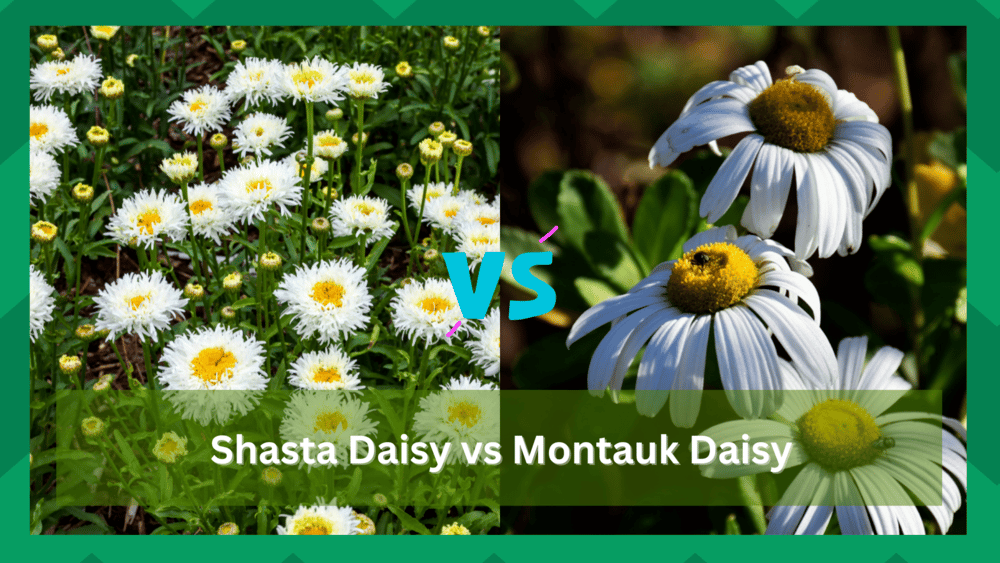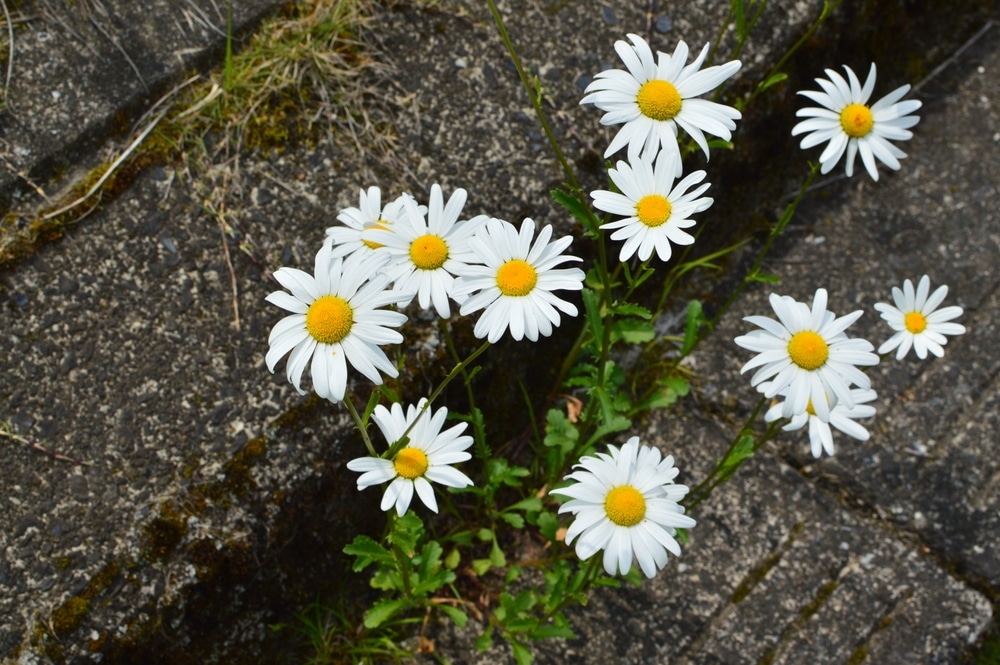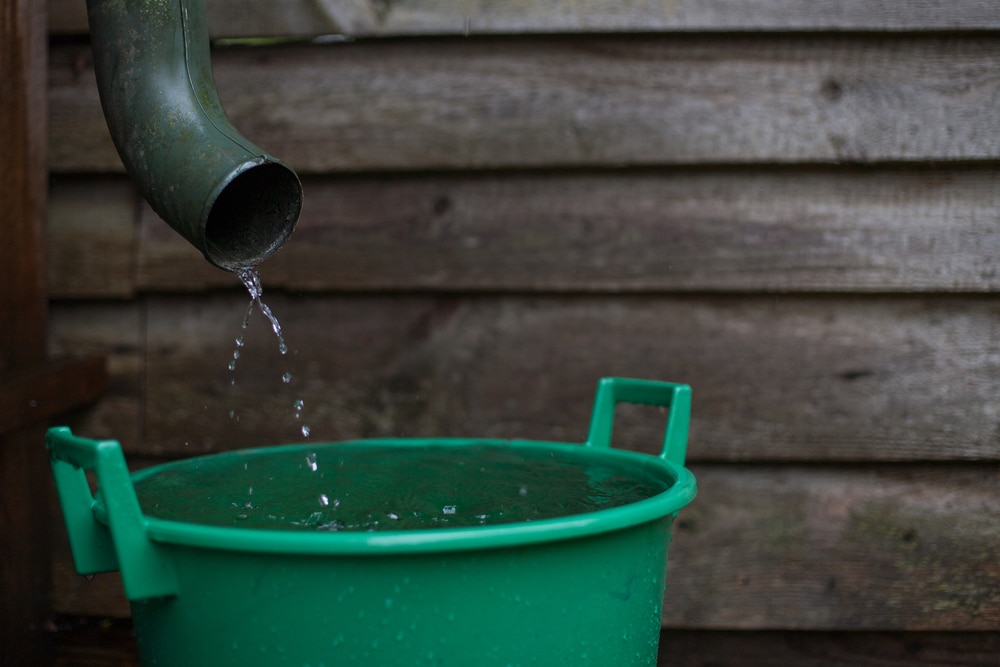
Bellis perennis, also commonly known as the daisy, is a variety of flowers found in European states. Flowering plants are also considered the main flowers in the term daisy. Though, you need to understand that there are different plant species.
There are almost 20,000 species of daisies worldwide, providing gardeners with various options to plant according to their choice.
Their beauty, simplicity, and ability to grow almost anywhere, any time of the year, make them one of the most planted flowers that are liked by many worldwide.
When simply referring to a flower as the daisy, this usually indicates that people are talking about a common daisy. However, if some other term is being used, this is mostly like a variety.
Shasta Daisy vs Montauk Daisy
| Shasta Daisy | Montauk Daisy | |
| Plant Height | 2-3 ft | 3 ft |
| Plant Width | 1-2ft | 3-5ft |
| Flower size | 3-4 inch | 2-3 inch |
| Flower color | White (thin petals) | White (comparatively thick petals) |
| Attract | Birds | Butterflies |
| Most commonly used | Gardens, flower arrangements | Borders, containers, mass planting |
| USDA hardiness zones | 5-8 | 3-8 |
There are tons of differences that can be found in these species. Still, many users might have trouble trying to distinguish between them rightly because of their same last name, Daisy, and that they belong to one family, although they are two different variants.
Shasta daisy and Montauk daisy are both popular varieties of plants that have recently gained a lot of popularity. Though, people often get confused between these two because of all the similarities.
This is why we will use this article to provide you with a comparison between the varieties so that it can be easier for you to decide which one should be planted if you have a choice.
Shasta Daisy
The Shasta daisy is a commonly grown flowering plant that is perennial. The plant is mainly known for its classic look of daisy flowers. This contains a round yellow disc that is covered with white petals.
The flowers grow in clumps and bloom to full size; each is around 3-4 inches wide with white perineal thin petals, and central yellow discovers the 2-3 feet long sturdy stems with dark green leaves.
At first glance, people can easily tell this is a type of daisy. However, trying to distinguish the variety can take some time, so some factors should be kept in mind.
One of the main differences between Shasta daisies and common ones is that the Shasta variant grows many more flowers on its plant.
These are larger, so you can easily tell them apart if put side by side.
The Shasta variant of the daisy flower was created in the 1900s when botanist Luther tried to cultivate an ideal one that has thin pure white flowers that are large in size, bloom early, and serve best when used as cut flowers.
His consistent efforts back then resulted in the beautiful daisy variant we call Shasta Daisy today.
This variety is often grown because of how attractive it makes your garden look.
With these flowers planted in your garden, you’ll have a complete summer, and spring full bloomed with flowers.
Apart from their beautiful white flowers that bloom throughout their season, another benefit of planting them is that they are compartments aggressive flowers that not only spread easily but also come back year after another.
Another benefit is that people can remove all the flowers once they have grown. This is usually better for the plant as the process acts as pruning.
It also serves to be used in floral decorations, bouquets, and flower arrangements and would live even after being cut in bouquets for as long as one to two weeks without wilting, just as fresh and beautiful as on the stems of plants.
However, people must do this carefully, as the cuts should be large enough to bring the plant back to its first set of leaves. This promotes the growth of the flowers allowing them to bloom again in the same season and also in the other.
If rightly planted, these Shasta daisy blooms from early summer and continues to start fresh and bloom throughout the fall if maintained well and pruned properly throughout the season.
Another thing that you can do is wait until the flowers start wilting. This allows people to keep their gardens full of flowers much longer.
Taking care of Shasta daisies is also quite easy as it mostly requires people to keep them under sunlight. Ensuring the plant gets long hours of light every day should help ensure that it stays healthy and blooms to its full size.
Although the shasta daisy plant also grows in the shade, it produces flowers that are smaller in size and have fewer blooms.
Aside from this, one more thing you can do is pour water over its soil to keep it moist. This should always be well-drained so the flowers don’t die from overwatering.
Maintaining the soil is important for keeping your plant healthy to produce fresh, fully bloomed flowers. This includes fertile soil that is rich in organic matter but not excessive.
Additionally, the soil should be well drained as the shasta daisy is not a plant that doesn’t do well with water puddles and mushy roots.
Last but not least is the planting season of these flowering plants.
Although these flowing plants can be planted at any time of the year, spring is the best time for the first bloom.
It’s better to avoid planting them in extreme weather to have an overall better-yielding plant.
Montauk Daisy
Montauk daisy, also known as the Nippon daisy, is a species of daisy flower native to coastal regions of Japan.
The flower has quickly spread to other regions because of its beautiful flowers. When it comes to this, people should note that the flowers are even naturalized along seashores in New Jersey and New York.
Both flowers can look almost identical when comparing the variety with the Shasta daisy. One small difference that is usually visible is that the Montauk variety has rounder edges slightly on its petals.
The flowers of the Montauk daisy grow on long stems, and the plant’s average height is around 3 feet.
In addition to the round edges of the Montauk daisy, the number of petals helps you distinguish the flower from the Shasta daisy.
Although one cannot say the exact number of petals you’d notice, the Shasta daisy has a thin and significantly greater number of white petals compared to Montauk, which has relatively thick but few white petals.
The center of these flowers is also more yellowish green than pure yellow, which helps you differentiate them from Shasta daisies.
Furthermore, the size of the Montauk daisy is also somewhat smaller than the Shasta daisy as they measure about 2-3 inches wide.
Another fact that makes Montauk daisies different from Shasta is that they are low-maintenance plants. So if you are not regularly pruning or watering them, you wouldn’t make a mess in your garden.
If not pruned, they will spread 3 to 4 feet wide and give a wholesome look to your garden with all the fresh blooming flowers.
These plants grow well in locations with direct sunlight and attract butterflies.
So if you want to see your garden filled with beautiful white flowers surrounded by beautiful butterflies, planting Montauk daisy flowers around your garden beds is the best decision.
Other than this, the two plants are quite similar. There are a few more differences, including the leaves of the Montauk variety being a little more shiny and leathery than Shasta Daisy’s leaves.
One major difference that can be hard to notice is the bloom time for these flowers. Shasta daisy usually grows best in warmer temperatures because of their high heat requirements.
On the other hand, the Montauk daisy variety can be planted in colder regions and grow well in both temperatures.
Most people using the flower report that it can stay healthy even during winters, and the plant can even survive some frost. This makes the perennial plant a great option to go for if you are living in a colder environment.
The flowers on both varieties look similar, which is why the decision mainly comes down to the temperatures around you. Depending on these you can easily select a specie that will last you a much longer time.
To produce full-bloomed flowers, these plants must be planted in well-drained, acidic soil.
You can also use fertilizer to improve the yield and quality of the flowers on the plant; however, be careful not to overfill the soil with fertilizer or water, as the plant roots may get soggy and not yield as they normally would.
The Bottom Line
Shasta Daisy and Montauk Daisy are both perennial plants that produce white flowers and have a central yellow disk.
Both are often confused because of their same name; nevertheless, they have trivial differences that can help you tell them apart.



